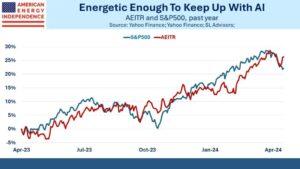By Brandon Brouillard and Janet Rilling, CFA, CPA
This episode features a discussion about the fixed-income markets and considerations investors may need to balance with their desire for income in a low-yield world. Janet Rilling, Senior Portfolio Manager and Head of Multi Sector – Plus & High Yield on our Global Fixed Income Team, discusses the opportunities and risks she sees for investors.
Click here to listen to the podcast
Brandon Brouillard: I’m Brandon Brouillard and you’re listening to On the Trading Desk®.
Today’s topic is a focused discussion on balancing the desire to find income in today’s world of ultralow interest rates with the prospect that Treasury yields may rise in the near future, pressuring bond prices lower. It’s a timely conversation, given many investors around the world are both yield-starved and worried that rising inflation and economic growth could pressure yields higher.
I’m joined by Janet Rilling, Senior Portfolio Manager and head of our Multi Sector Fixed Income – Plus & High Yield team, to share her insights. Thanks for being here, Janet.
Janet Rilling: Hi, Brandon. I’m happy to be here today.
Brandon: Perfect. Well, let’s get started. How would you characterize the current state of the fixed-income markets?
Janet: We see the fundamentals of the fixed-income market as broadly healthy right now. The economic indicators have generally continued to improve, and the fundamentals of the investment grade and high-yield corporate markets have recovered from what were likely the cycle bottoms.
Gross leverage and default rates have fallen and interest coverage ratios have improved.
The technical backdrop is also supportive as investors around the world look for opportunities to source income.
Brandon: Well, that all sounds pretty constructive.
Janet: Yeah, we believe that it is. But while there’s a lot of good news out there, we do have some reservations around the very high valuations for most fixed-income sectors and are faced with the reality that yields are very low.
Valuations are stretched and as we look across the fixed income landscape, no sector really stands out as particularly cheap. If you look at investment-grade credit spreads, for example, they’re near the post-Financial Crisis tights.
Basically, it looks like all the good news has been priced in. So that does create a challenge, but despite the valuations, our view is that we’re in the mid-cycle portion of the credit cycle, which means it could have some time to continue to run.
We think the way to structure a portfolio in this environment is to keep additional yield in it as compared to the market average or the benchmark, as it stands in our case.
Across the portfolios that we manage, we’ve focused on adding a range of securities that offer additional yield, but doing it in a very diversified manner.
Importantly, we don’t think this is the sort of environment where you want be at your max risk exposure, because valuations are stretched. But we do think having a diversified set of exposures to source carry is important.
Investors should pay close attention to security selection and ensure they’re not taking on too much idiosyncratic risk.
This is a time to be really focused on getting the credit selection right. Yields are low and the temptation for investors is to reach for yield by stretching out in duration or loading up on lower-quality credit. We think it’s a better approach to have exposures across a variety of sectors to source income and to keep the portfolio ready for any volatility or big shifts in relative value.
Brandon: Well, thanks for the insight. And you mentioned duration. What’s your outlook for rates and inflation?
Janet: Interest rates are always on the minds of fixed-income investors, and as I’ve mentioned, we’re in a low-rate environment. So for many, the concern is will rates be moving up? And when interest rates increase, of course, bond values go down.
We saw rates move up pretty significantly in the early part of the year before settling back a bit. It is our expectation that rates will rise over the next several months in a continuation of this two-steps-forward, one-step-back dynamic that we’ve seen play out over the last year.
Inflation is certainly a factor, which has gained a lot of attention in the first part of 2021. The Federal Reserve, for their part, has told us that their view is inflation will be more transitory. And the market has seemed to embrace that view.
Certainly, we’ve seen the data more recently come in a bit higher in terms of inflation prints. As a result, though, of this transitory view, rates have remained in a lower part of the range, and they’ve been there now for quite some time.
There are drivers though, that could mean that inflation is more persistent. So things that we’re watching include the supply chain shortages. Those are things that could correct in the short term, but it’s not clear that that will happen. So if it takes longer for some of those dislocations to clear, that could be presenting upward pressure on prices.
Secondly, we think there’s still some pent-up demand. Travel is a good example of that. We saw some re-engagement in travel, but it’s seeming to be pulling back again now. So pent-up demand at times, when it is released, can lead to more inflation pressure.
We’re also seeing changes in the workforce. It seems as if fewer people are willing to take some of the available jobs. And we do see a lot of job openings. That could lead to wage increases.
And then the last area is housing. We see that housing prices have continued to move up really across the country.
So you bring all those pieces together, along with fiscal stimulus, they could lead to upward price pressure continuing for some time. In our minds, we’re not expecting runaway inflation, but it is a risk worth monitoring.
Brandon: It sounds like there are a lot of variables at play. So how do you and the team incorporate the data into your investment process?
Janet: We view the markets through the lens of a six-month time horizon. We believe that this helps us to really adjust the portfolio to take advantage of changes in the market, and also to remain disciplined around relative value.
We like using more of the six-month outlook because it allows us to adjust to changes in market conditions. We do think that’s a bit different than others in the fixed-income world that may position for longer cycles, maybe three-to-five-year cycles.
And the reason we think the distinction is important is because over time, we’ve seen that market dislocations do occur and actually happen on a somewhat regular basis. And you only have to look back to March of 2020, when COVID hit, to see the most recent example of how quickly things can change.
We also find this approach valuable as it helps us sift through data to find catalysts and inflection points. With a long-term investment horizon, one may be focused years down the road and cannot take the time to consider smaller changes, which can have big impact on valuations.
For example, we’ve recently seen the University of Michigan Consumer Sentiment data drop to a pandemic-era low. This could signify that the U.S. consumer is more worried about the Delta variant, and a change in spending could really sap the momentum of the recovery. However, we also saw retail sales recently which was quite healthy. Sometimes the consumer says one thing and does another.
Being able to really look through the data and focus on a shorter time horizon allows us to distinguish signal from noise. We think this helps us see the forest and the trees. We also believe that it allows us to be more flexible and dynamic. And because of this approach, we’re used to and are willing to make changes in the portfolio. We can move on from investment ideas if the facts change.
Brandon: That makes sense. So rather than trying to position a portfolio for conditions which may occur years down the road, you’re looking to take advantage of what’s on offer today? Or really over a shorter time frame?
Janet: Yeah, that’s right. It doesn’t mean that we turn over the portfolio every six months or hold positions for just a few months. It’s really the lens through which we view the market landscape. It facilitates the rest of our investment process, which is to take an unbiased approach and to use multiple levers to express a view.
Brandon: Well, it sounds like investors have a lot to consider as they look for opportunities to source income in our low-yield world.
Janet: Correct, but sadly we don’t believe there is an easy “set it and forget it” option for yield-seeking investors. We think the best option is to utilize a six-month horizon and to build a broadly diversified set of positions to source income relative to the benchmark. Keeping an unbiased approach, that is one without big structural bets, is also important because as markets change, we need to change.
Brandon: Well, this have been an exciting conversation and thank you for sharing your insights, Janet.
Janet: Thank you, Brandon. It was really nice speaking with you.
Brandon: That wraps up this episode of the On the Trading Desk podcast. To stay connected to On the Trading Desk and listen to past and future episodes of the program, you can subscribe to the podcast on iTunes, Stitcher, Google Podcasts, Spotify, or Overcast. Thanks for listening. I’m Brandon Brouillard and we’ll catch you next time.
—
Originally Posted on September 29, 2021 – Seeing the Forest and The Trees in A Yield-Starved Environment
Disclosure
Diversification does not ensure or guarantee better performance and cannot eliminate the risk of investment losses.
Disclosure: Wells Fargo Asset Management
Wells Fargo Asset Management (WFAM) is the trade name for certain investment advisory/management firms owned by Wells Fargo & Company. These firms include but are not limited to Wells Capital Management Incorporated and Wells Fargo Funds Management, LLC. Certain products managed by WFAM entities are distributed by Wells Fargo Funds Distributor, LLC (a broker-dealer and Member FINRA). Associated with WFAM is Galliard Capital Management, Inc. (an investment advisor that is not part of the WFAM trade name/GIPS firm).
Disclosure: Interactive Brokers
Information posted on IBKR Campus that is provided by third-parties does NOT constitute a recommendation that you should contract for the services of that third party. Third-party participants who contribute to IBKR Campus are independent of Interactive Brokers and Interactive Brokers does not make any representations or warranties concerning the services offered, their past or future performance, or the accuracy of the information provided by the third party. Past performance is no guarantee of future results.
This material is from Wells Fargo Asset Management and is being posted with its permission. The views expressed in this material are solely those of the author and/or Wells Fargo Asset Management and Interactive Brokers is not endorsing or recommending any investment or trading discussed in the material. This material is not and should not be construed as an offer to buy or sell any security. It should not be construed as research or investment advice or a recommendation to buy, sell or hold any security or commodity. This material does not and is not intended to take into account the particular financial conditions, investment objectives or requirements of individual customers. Before acting on this material, you should consider whether it is suitable for your particular circumstances and, as necessary, seek professional advice.










![[Gamma] Scalping Please [Gamma] Scalping Please](https://ibkrcampus.com/wp-content/smush-webp/2024/04/tir-featured-8-700x394.jpg.webp)
![[Gamma] Scalping Please [Gamma] Scalping Please](https://ibkrcampus.com/wp-content/uploads/2024/04/tir-featured-8-700x394.jpg)












